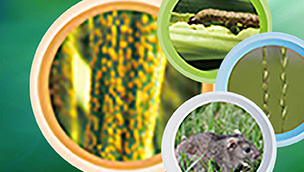IPPCAAS Experts Visit Australia to Promote In-Depth China–Australia Cooperation in Plant Biosafety
LEARN MORE
From May 5 to 11, a delegation led by Dr. Zhang Jie, Deputy Director General of the Institute of Plant Protection, Chinese Academy of Agricultural Sciences (IPPCAAS), visited the Department of Agriculture, Fisheries and Forestry (DAFF) of Australia, the Commonwealth Scientific and Industrial Research Organisation (CSIRO), and the University of Melbourne. The visit aimed to further promote in-depth cooperation in the fields of plant biosafety, biological control, and soil health.
Building upon the cooperation agreement signed in Beijing in December 2024, the high-level delegation from IPPCAAS paid a return visit to the Plant Biosecurity and Science Services Division of DAFF in Canberra and co-hosted a China-Australia bilateral seminar. Dr. Peter Finnin, Director of the Biosecurity Plant and Science Services Division, attended the opening ceremony and extended a warm welcome to the Chinese delegation. More than 20 renowned experts in the field of plant biosecurity from Canberra, Melbourne, Perth, and other regions participated in the seminar. DDG Zhang delivered a comprehensive overview of the recent collaboration between IPPCAAS and Australian governmental agencies, research institutes, and universities. He reviewed the achievements in joint laboratory development, collaborative research, and talent training, and proposed ideas for deepening future cooperation, including suggested areas, modalities, and cooperation frameworks in plant biosecurity. Prof. Yan Dongdong, Associate Profs. Liu Chenxi, and Xian Xiaoqing from the delegation gave thematic presentations on research and application of soil fumigation, pest biological control technologies, and invasive species risk assessment methodologies respectively. Following the seminar, both sides reached important consensus on further cooperation in three major areas: the establishment of invasive species risk prediction and early warning systems, the R&D of intelligent diagnostics and monitoring technologies, and the application of emergency response and green control technologies. A detailed annual exchange plan was also developed.
During the visit, the IPPCAAS delegation visited CSIRO’s Brisbane Center and held in-depth exchanges with Dr. Dean Brookes, Director of the Biological Control Laboratory, and Academician Andy Sheppard, among others. The discussions focused on invasive species and biological control, and the next steps for the ongoing China-Australia joint project on biological control involving IPPCAAS. In Melbourne, the delegation attended the 2025 International Symposium on Promoting Green Agriculture Development held at the University of Melbourne, where they delivered keynote speeches and participated in panel discussions. They also met with Dr. Jeremy Cottrell, Associate Dean of the Faculty of Agriculture, Food and Ecosystem Sciences, and reached several key agreements on joint talent development, scientific research cooperation, and platform building.
This visit not only consolidated the traditional areas of cooperation between China and Australia in invasive species risk assessment and biological control, but also successfully expanded into new fields such as plant and soil health management. Both sides reached broad consensus on joint research in key technologies, data sharing, and talent development. The outcomes of this visit will help drive innovation in plant biosafety and provide strong scientific and technological support for deepening China-Australia agricultural science and technology cooperation, and for safeguarding global food security, biosecurity, and ecological sustainability.
LEARN MORE
-
IPPCAAS Experts Visit Australia to Promote In-Depth China–Australia Cooperation in Plant BiosafetyFrom May 5 to 11, a delegation led by Dr. Zhang Jie, Deputy Director General of the Institute of Plant Protection, Chinese Academy of Agricultural Sciences (IPPCAAS), visited the Department of Agriculture, Fisheries and Forestry (DAFF) of Australia, the Commonwealth Scientific and Industrial Research Organisation (CSIRO), and the University of Melbourne. The visit aimed to further promote in-depth cooperation in the fields of plant biosafety, biological control, and soil health. Building upon the cooperation agreement signed in Beijing in December 2024, the high-level delegation from IPPCAAS paid a return visit to the Plant Biosecurity and Science Services Division of DAFF in Canberra and co-hosted a China-Australia bilateral seminar. Dr. Peter Finnin, Director of the Biosecurity Plant and Science Services Division, attended the opening ceremony and extended a warm welcome to the Chinese delegation. More than 20 renowned experts in the field of plant biosecurity from Canberra, Melbourne, Perth, and other regions participated in the seminar. DDG Zhang delivered a comprehensive overview of the recent collaboration between IPPCAAS and Australian governmental agencies, research institutes, and universities. He reviewed the achievements in joint laboratory development, collaborative research, and talent training, and proposed ideas for deepening future cooperation, including suggested areas, modalities, and cooperation frameworks in plant biosecurity. Prof. Yan Dongdong, Associate Profs. Liu Chenxi, and Xian Xiaoqing from the delegation gave thematic presentations on research and application of soil fumigation, pest biological control technologies, and invasive species risk assessment methodologies respectively. Following the seminar, both sides reached important consensus on further cooperation in three major areas: the establishment of invasive species risk prediction and early warning systems, the R&D of intelligent diagnostics and monitoring technologies, and the application of emergency response and green control technologies. A detailed annual exchange plan was also developed. During the visit, the IPPCAAS delegation visited CSIRO’s Brisbane Center and held in-depth exchanges with Dr. Dean Brookes, Director of the Biological Control Laboratory, and Academician Andy Sheppard, among others. The discussions focused on invasive species and biological control, and the next steps for the ongoing China-Australia joint project on biological control involving IPPCAAS. In Melbourne, the delegation attended the 2025 International Symposium on Promoting Green Agriculture Development held at the University of Melbourne, where they delivered keynote speeches and participated in panel discussions. They also met with Dr. Jeremy Cottrell, Associate Dean of the Faculty of Agriculture, Food and Ecosystem Sciences, and reached several key agreements on joint talent development, scientific research cooperation, and platform building. This visit not only consolidated the traditional areas of cooperation between China and Australia in invasive species risk assessment and biological control, but also successfully expanded into new fields such as plant and soil health management. Both sides reached broad consensus on joint research in key technologies, data sharing, and talent development. The outcomes of this visit will help drive innovation in plant biosafety and provide strong scientific and technological support for deepening China-Australia agricultural science and technology cooperation, and for safeguarding global food security, biosecurity, and ecological sustainability.
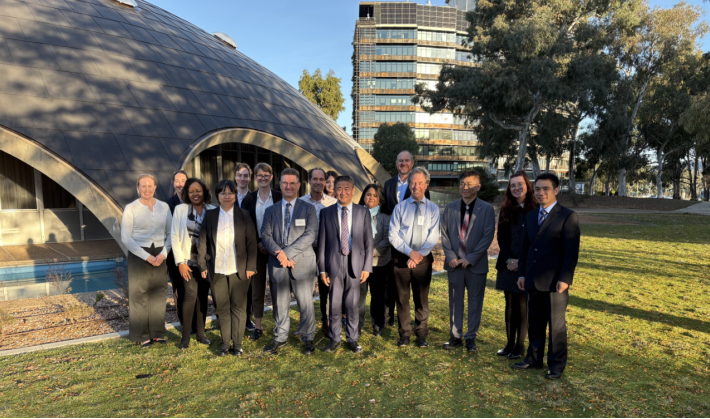 192025-05
192025-05 -
China-France cooperation in plant protection was further strengthenedFrom April 13 to 18, 2025, a delegation led by Prof. Liu Wende, Deputy Director General of the Department of International Cooperation at the Chinese Academy of Agricultural Sciences (CAAS) and Chief Scientist of the Innovation Team for Monitoring and Control of Fungal Diseases in Food Crops at IPPCAAS, visited the French National Research Institute for Agriculture, Food, and Environment (INRAE). The delegation engaged in extensive discussions with experts from relevant French research institutes to strengthen bilateral cooperation in science and technology plant protection. The delegation visited the Institute of Ecology and Environmental Sciences at the INRAE Versailles campus, where they held in-depth exchanges with researchers from the laboratory of Prof. Emmanuelle Jacquin-Joly, French Co-Director of the China-France Joint Laboratory for Plant Protection, and the laboratory of Prof. Didier Lereclus at Micalis. Prof. Liu Wende gave a comprehensive overview of CAAS and its international cooperation strategy. Dr. Tian Fang, Deputy Director of the Division of Domestic and International Cooperation of IPPCAAS, briefed the INRAE experts on IPPCAAS’s latest progress in scientific innovation, team development, and international engagement. Prof. Liu Taiguo and Prof. Wang Bing shared recent breakthroughs in fungal disease monitoring and control in wheat, insect olfactory mechanisms, and the development of environmentally friendly pesticides. French experts and jointly trained graduate students also presented updates on their respective research areas. During the visit, the delegation also toured the Institute Jean-Pierre Bourgin for Plant Sciences (IJPB) at the Versailles campus and the UMR Genetics, Diversity and Ecophysiology of Cereals (UMR GDEC) at the Clermont-Ferrand campus. They held academic exchanges with local experts and discussed topics of mutual interest such as root microbiomes, crop disease resistance mechanisms, and breeding of high-quality new varieties. Both sides expressed intentions to strengthen future cooperation through researcher exchanges, mutual visits, and joint training of graduate students. This visit not only consolidated the foundation of the China-French Joint Laboratory for Plant Protection, but also broadened avenues for substantive collaboration in the research and development of plant disease and pest management technologies as well as the innovative utilization of germplasm resources. It is expected to inject new impetus into joint technological innovation between China and France in the field of plant protection, and will play a strategically significant role in advancing bilateral agricultural science and technology cooperation and strengthening food security. Since the launch of the Joint Laboratory, the two sides have conducted over 30 mutual visits, jointly trained more than 10 graduate students and young scientists, and co-authored over 40 papers in leading international journals such as Nature Communications , Molecular Biology and Evolution, PNAS , and eLife. They have jointly applied for and secured eight collaborative projects, including those under China’s National Key R&D Program, the Horizon Europe, and the NSFC-CNRS Cooperation and Exchange Project. In recognition of their contributions, French experts Prof. Didier Lereclus and Prof. Emmanuelle Jacquin-Joly were awarded the Chinese Government Friendship Award in 2019 and 2024, respectively.
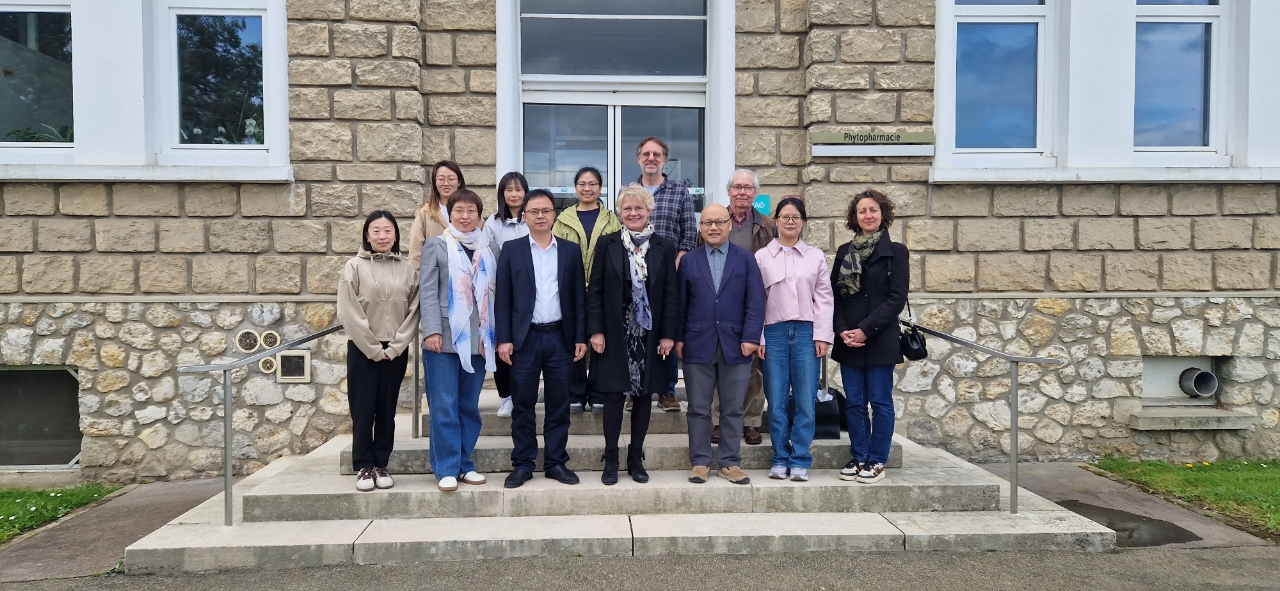 232025-04
232025-04 -
New progress was made for the Lao PDR – China Joint Laboratory for Plant ProtectionFrom March 17 to 22, at the invitation of the Department of Crop Production under the Ministry of Agriculture and Forestry (MAF) of Lao PDR, a delegation of eight experts led by Prof. Zhang Jie, Deputy Director General of the Institute of Plant Protection, Chinese Academy of Agricultural Sciences (IPPCAAS), visited Vientiane to advance bilateral cooperation on plant biosafety. The delegation held meetings with Mr. Bounsu Soudmaly, Deputy Director General of the Department of Agriculture, and Dr. Souliya Souvandouane, Director of the Plant Protection Center (PPC), along with other senior officials and technical staff. The two sides discussed implementation plans for several collaborative projects in Laos, including the Strategic Science and Technology Innovation Cooperation Project under China’s National Key R&D Program, the Asia Cooperation Fund Project, and Phase II of the International Agricultural Science and Technology Innovation Program (CAASTIP II). They also reviewed progress on the development of the Lao PDR-China Joint Laboratory for Plant Protection. Prof. Zhang Jie introduced the key achievements since the joint laboratory’s establishment. Dr. Souvandouane expressed appreciation for the long-term support from IPPCAAS and emphasized the importance of continued cooperation. According to the shared vision, the joint laboratory will focus on monitoring and early warning of major transboundary pests and diseases, green pest management technologies, and capacity building for plant biosecurity. The goal is to promote the demonstration and application of China’s eco-friendly technologies and biocontrol products in Laos, and jointly contribute to a regional plant protection network. During the visit, experts from IPPCAAS provided technical training on several priority topics, including monitoring of migratory pests, integrated pest management (IPM) for maize, surveillance and control of maize foliar diseases, and the application of Bacillus thuringiensis (Bt)-based biopesticides. Over 20 technical staff from the Plant Protection Center participated in the training, which included hands-on demonstrations and in-depth discussions. To support capacity development, two staff members from PPC will pursue Ph.D. studies in China this year. Additionally, three researchers will conduct three-month academic exchanges in China as part of the ongoing cooperation. The delegation also visited rice and maize production sites near Vientiane, where they confirmed with Lao counterparts the design and schedule of upcoming IPM demonstration activities. In addition, the Chinese delegation visited the FAO Representation in Lao PDR, the Faculty of Agriculture at the National University of Laos, and the Yunnan State Farms Lao Rubber and Crop Research Center, laying the groundwork for future collaboration. This visit marks a new stage in China-Laos cooperation in plant protection, reinforcing the joint commitment to advancing green agriculture under the Belt and Road Initiative and contributing to regional food security and biosafety.
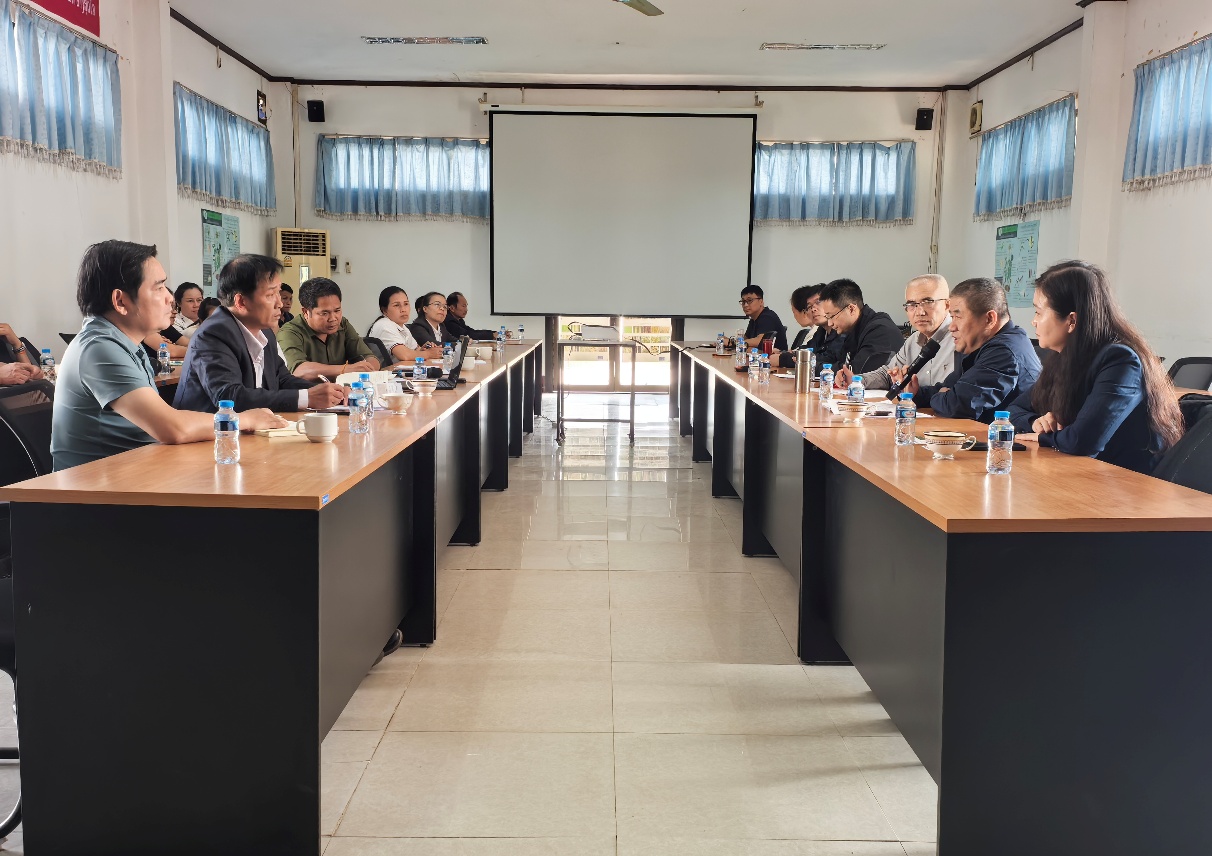 142025-04
142025-04 -
Collaboration on sustainable agriculture practices highlighted at the MARA China – CABI Joint Lab meetingThe annual Steering Committee meeting of the Chinese Ministry of Agriculture and Rural Affairs (MARA)-CABI Joint Laboratory for Biosafety and its subcentres reviewed work progress and discussed the strategies forward in international collaboration for a more sustainable agriculture in China and beyond. China and CABI have been working together for over four decades. In 2008, MARA, the Chinese Academy of Agricultural Sciences (CAAS) and CABI, launched the MARA – CABI Joint Lab for Biosafety, which is being hosted by the Institute of Plant Protection, CAAS (IPPCAAS) in Beijing. This was later expanded and joined by affiliated Chinese sub-centres in Shandong, Anhui, Yunnan and Inner Mongolia as well as by a European Laboratory at CABI in Switzerland. Deepen collaboration in research and development As an annual technical and governance event, a technical advisory group (TAG) of the Joint Labs and subsequently the Steering Committee members met to review progress, plan next year activities and agree on longer-term strategies. This is aimed to deepen collaboration in research and development in agricultural science and technology that exerts local and global influence, and facilitates capacity building, exchange of experts, and knowledge sharing. During this year’s meetings in March 2025, a particular focus was put on invasive species management, the promotion of biopesticide and biological control products for large-scale application and technology transfer, pesticide risk reduction, and grassland ecological restoration and carbon sequestration. The work on low-risk pest management includes, among many others, for example, the green management of the invasive tomato leaf miner, and yellow spined bamboo locust in China and Southeast Asian countries, the potential classical biological control of fall armyworm via parasitoids in Laos and Vietnam, or stink bugs and grassland locusts in China and neighbour countries. Further, it is recognised that technical knowledge of IPPCAAS in pesticide residue monitoring and risk assessment can help CABI Member Countries such as Kenya and Ghana. This is largely through piloting national pesticide residue monitoring programmes (NPRMP) in prioritized crops, the establishment of operational and certified laboratories for pesticide residue monitoring, and others. Bridging role of Joint labs Another major focus is on the bridging role of the Joint labs in scientific and technological innovation, and triangular collaboration, which were emphasised by a number of Steering Committee Members. Dr Ulrich Kuhlmann, CABI’s Executive Director of Global Operations and Co-Director of the Joint Lab said, “The Joint Lab, European Lab and the Chinese sub-centres continue to play an important bridging role in some major triangular collaboration and South-South co-operation initiatives to tackle a range of transboundary crop pests. “Collaboration on this scale in terms of research and development, across areas of shared knowledge and expertise, is vital to sustainably manage threats faced by millions of smallholder farmers and protect the fragile ecosystems they live in.” Mrs Gou Naying, Deputy Director General, International Co-operation Department, MARA, and the newly elected Chair of the Steering Committee said, “Going forward, the China MARA-CABI Joint Lab and sub-centres should strive to deepen collaboration and scale up the impact of the Joint Lab programme, building on the success achieved during the past 3 decades since China’s accession to CABI. “Among key measures are further strengthening the capacity of the Joint Lab and sub-centres and facilitating collaboration among CABI Member Countries thus contributing to the sustainable agricultural development in China and beyond.” Professor Sun Tan, Vice President, CAAS said, “I am pleased that, together, we are making great progress through the China MARA-CABI Joint Lab platform and network, which also includes facilitation of agricultural technology transfers between China and other countries under initiatives such as the Chinese Technology Going Global’ programme. We should continue to explore opportunities to fulfil this important objective of the Joint Lab and its sub-centres.” Further highlights Further highlights of 2024 are 31 exchange visits involving 118 experts, 11 seminars reaching 688 trainees, a Chinese scientist’s secondment to the European Laboratory, and an annual IPM course for graduate students of CAAS. Moreover, 38 new plant clinics had been established totalling up to 227 clinics and having provided free crop health advice to more than 33,800 farmers as part of the global Plantwise Plus programme. There was an active involvement of the Joint Lab and sub-centres in some high level conferences including the 3rd International Congress of Biological Control (ICBC3) in Costa Rica in 2024 which was co-organized by CABI and the International Organization for Biological Control (IOBC), in collaboration with the Inter-American Institute for Cooperation on Agriculture (IICA), the Ministry of Agriculture and Livestock of Costa Rica, and the University of Costa Rica. CAAS, CABI and Guandong Academy of Agricultural Sciences plan to co-organise the 2nd International Conference on Plant Biosafety in Guangzhou, China, in November 2025 which will include the celebration of the 30th anniversary of China’s membership in CABI, celebrating the successful collaboration between China and CABI, particularly through the MARA-CABI Joint Lab and its sub-centres. Members of the Steering Committee of the MARA China-CABI Joint lab for Biosafety during their strategic meeting in Beijing, on 26 March 2028. Additional information Main image: The annual Steering Committee of the Chinese Ministry of Agriculture and Rural Affairs (MARA)-CABI Joint Laboratory for Biosafety, held in Beijing, on 26 March 2025.
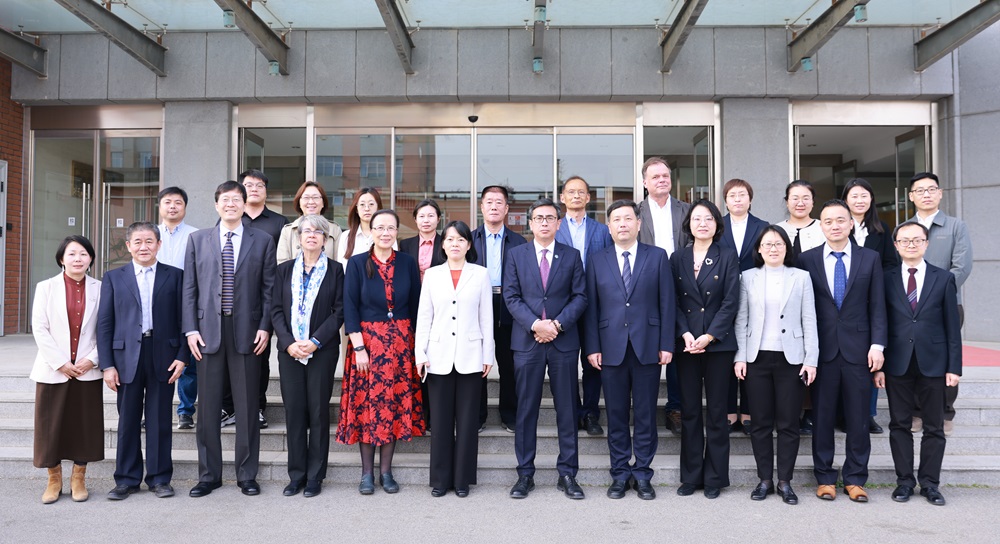 012025-04
012025-04
-
 2025-05-19IPPCAAS Experts Visit Australia to Promote In-Depth China–Australia Cooperation in Plant BiosafetyLEARN MORE
2025-05-19IPPCAAS Experts Visit Australia to Promote In-Depth China–Australia Cooperation in Plant BiosafetyLEARN MORE -

-
 2025-04-14New progress was made for the Lao PDR – China Joint Laboratory for Plant ProtectionLEARN MORE
2025-04-14New progress was made for the Lao PDR – China Joint Laboratory for Plant ProtectionLEARN MORE
-
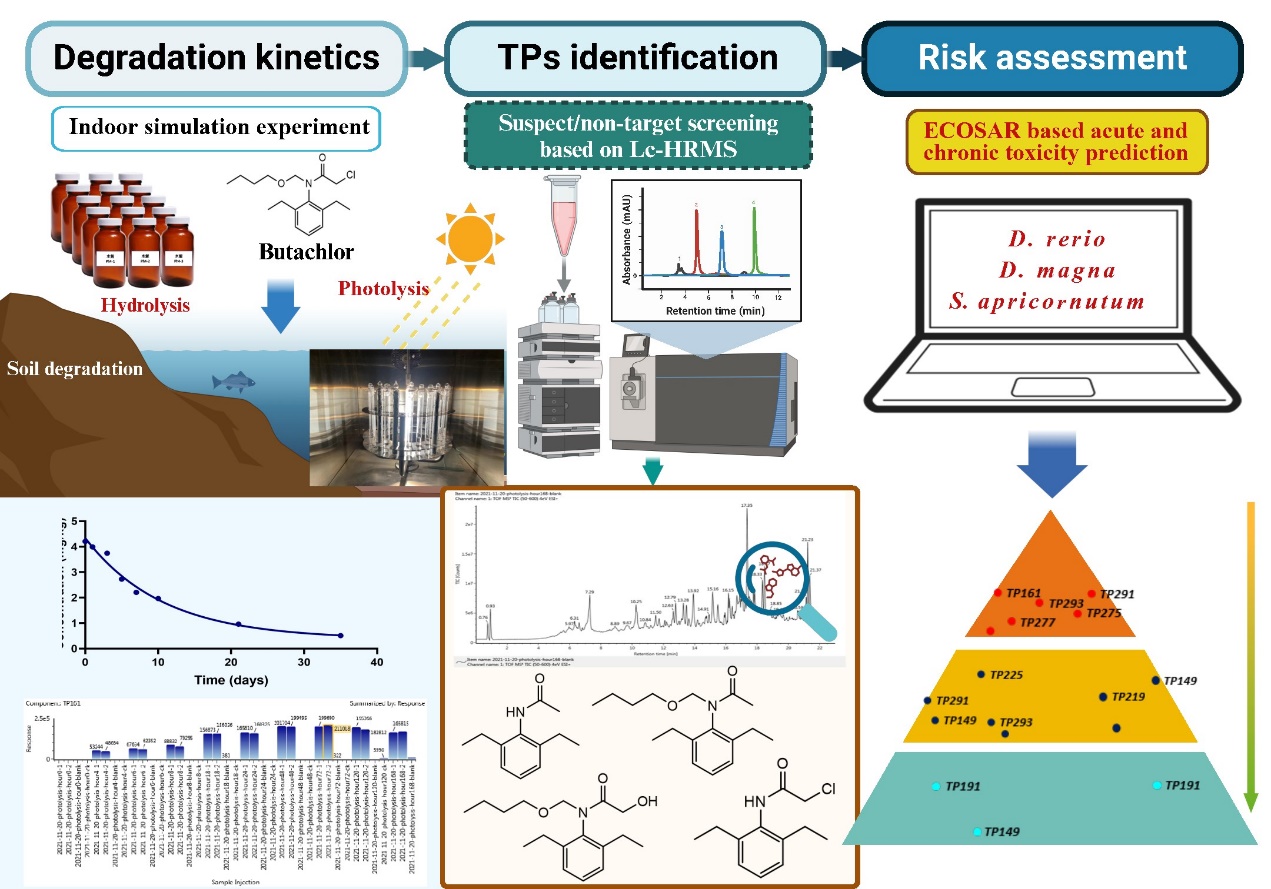 IPPCAAS Reveals Environmental Fate and Ecotoxicity of Butachlor Transformation Products Using NTS and QSAR Approaches
IPPCAAS Reveals Environmental Fate and Ecotoxicity of Butachlor Transformation Products Using NTS and QSAR Approaches -
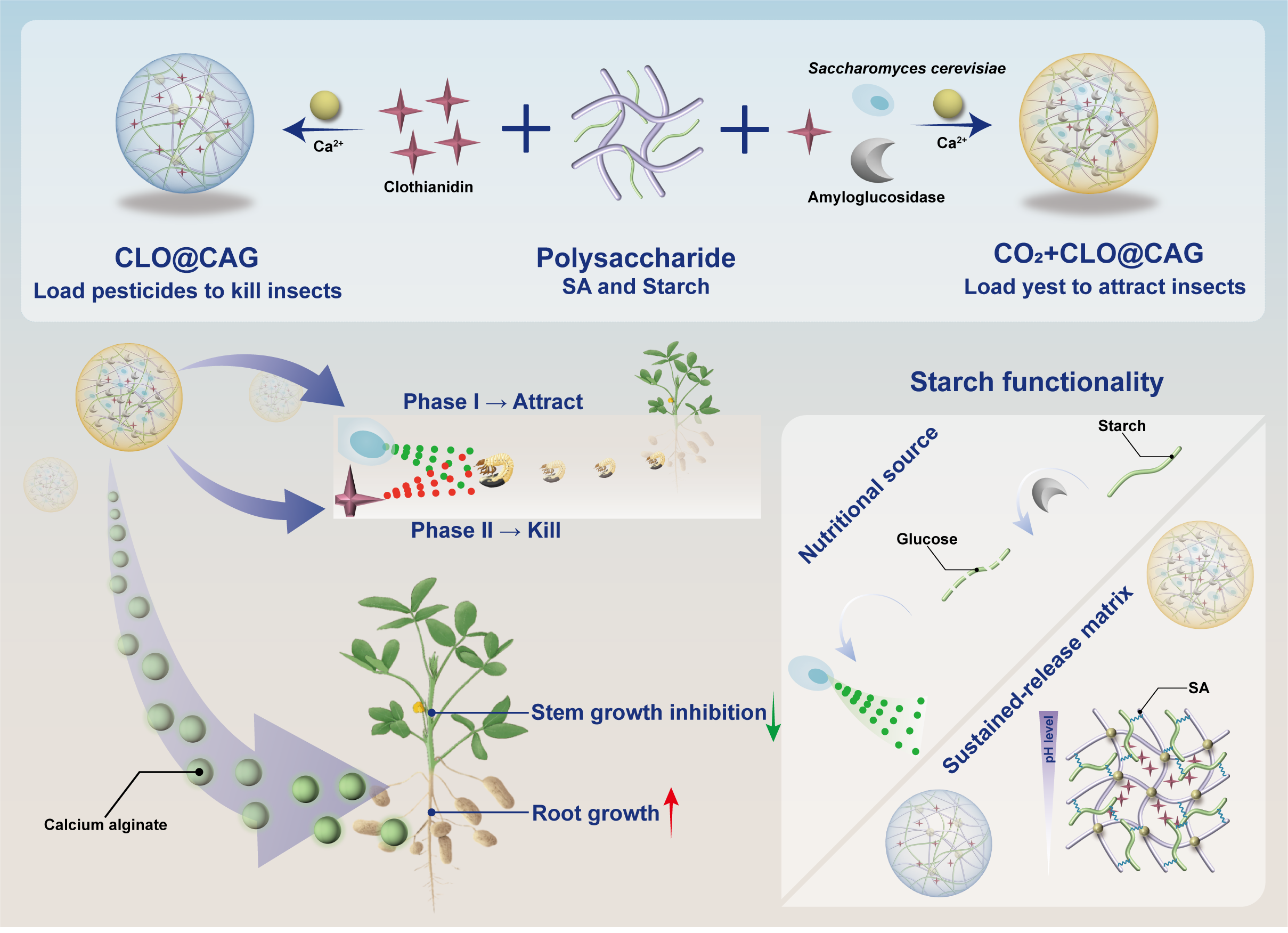 Innovative Attract-and-Kill Strategy for Subterranean Pest Control Published in Chemical Engineering Journal
Innovative Attract-and-Kill Strategy for Subterranean Pest Control Published in Chemical Engineering Journal -
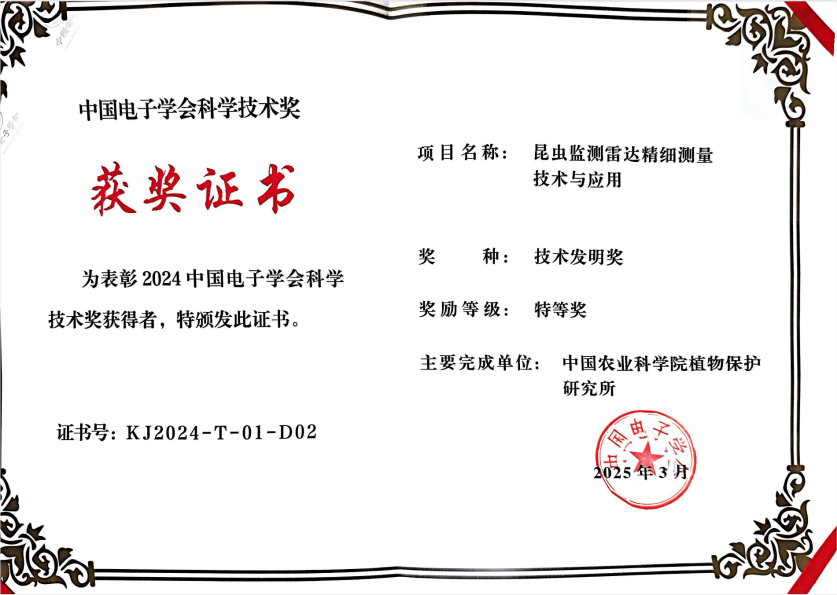 IPPCAAS Awarded Special Prize for Technological Invention at the Chinese Institute of Electronics Science and Technology Awards
IPPCAAS Awarded Special Prize for Technological Invention at the Chinese Institute of Electronics Science and Technology Awards

